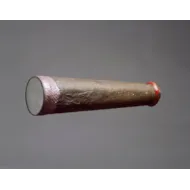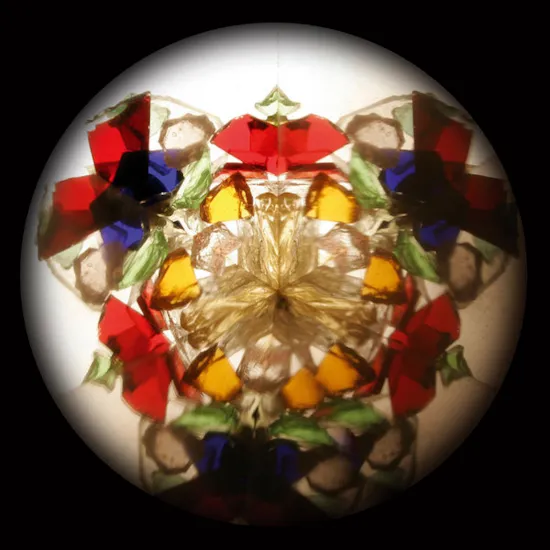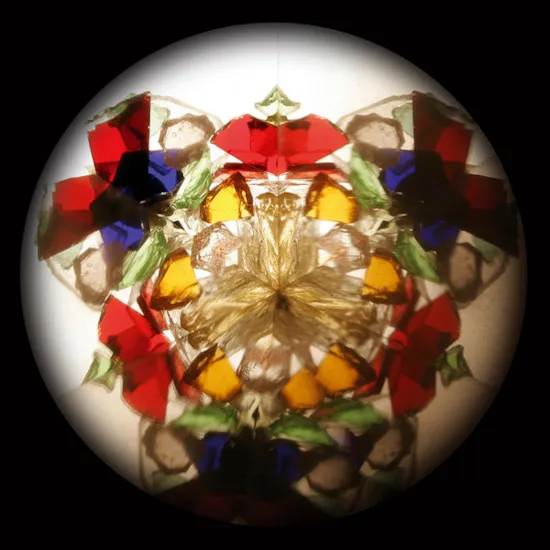An Early Kaleidoscope
An Early Kaleidoscope
Wood, paper, cardboard, tin and glass
Circa 1870
Size: 27cm long, 7cm dia. – 10¾ ins long, 2¾ ins dia.
Wood, paper, cardboard, tin and glass
Circa 1870
Size: 27cm long, 7cm dia. – 10¾ ins long, 2¾ ins dia.
The Kaleidoscope was invented by Sir David Brewster, a Scottish scientist, in 1816 and patented by him in 1817, but it was an American called Charles Bush who improved upon the Kaleidoscope and started an unstoppable 19th century craze for them with the manufacture of a ‘parlour’ Kaleidoscope in the early 1870’s.
Brewster named his invention from the Greek words Kalos meaning beautiful, Eidos meaning form, and Scopos meaning watcher; a beautiful form watcher. His Kaleidoscope was a tube containing loose pieces of coloured glass reflected by mirrors or glass lenses set at angles that created patterns when viewed through the end of the tube. A brilliantly simple and fascinating diversion invented by a man who also invented the lenticular stereoscope, binocular camera, polyzonal lens, polarimeter and the lighthouse illuminator.
Brewster named his invention from the Greek words Kalos meaning beautiful, Eidos meaning form, and Scopos meaning watcher; a beautiful form watcher. His Kaleidoscope was a tube containing loose pieces of coloured glass reflected by mirrors or glass lenses set at angles that created patterns when viewed through the end of the tube. A brilliantly simple and fascinating diversion invented by a man who also invented the lenticular stereoscope, binocular camera, polyzonal lens, polarimeter and the lighthouse illuminator.
An Early Kaleidoscope

SOLD







